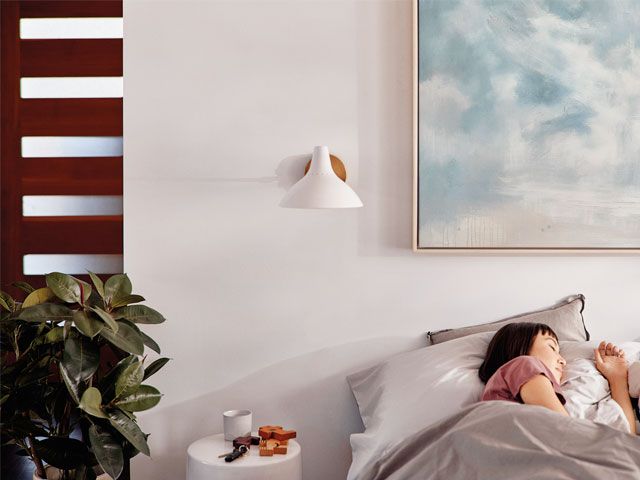
Image credit: Casper Beds/Good Homes
12 changes you can make to your bedroom to improve sleep
You know you want your bedroom to be a calming, cosy space to relax and unwind at the end of a busy day. But did you realise the décor you choose can have an impact on how well you sleep?
If you’re currently having trouble nodding off or staying in the land of snooze, you’re not certainly not alone.
One YouGov survey found that most Brits are getting fewer than eight hours of sleep per night, with one in six adults getting fewer than six hours.
The NHS recommends that adults have between seven and nine hours of sleep per night, and that people who don’t regularly get enough can see it affect their relationships, social life, and their ability to do daily tasks.
While there are many external factors that could contribute to this ongoing sleep epidemic – cost of living crisis, busy mind, or just general middle-of-the-night stress – switching up your bedroom interior could help improve sleep.
From the colours you use to how cluttered your room is can all impact the amount of ZZZs you get each night. Thankfully, there are a few easy yet effective fixes you can make to your boudoir which can help you wind down at the end of a long day.
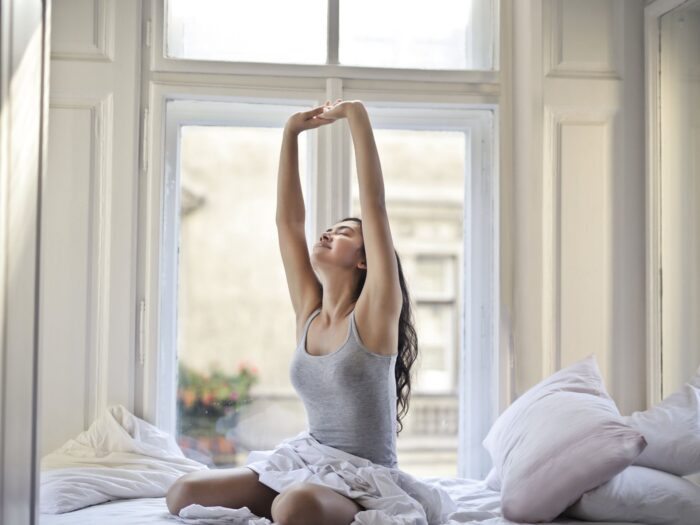
Find balance
“The most important aspect to consider when setting out to improve sleep in a bedroom is to incorporate balance and harmony within the space,” advises Feng Shui and interiors therapy expert Suzanne Roynon.
“The most comfortable and relaxing hotel rooms have a comfortable headboard and matching bedside furniture, as well as clear countertops and blackout curtains to optimise quality sleep for their guests. If we follow these principles in our own homes, it’s easy to create and enjoy a more supportive and restful space.”
Roynon says many bedrooms are imbalanced, perhaps with single or unmatched bedside tables, or a larger bedside cabinet on one side of the bed than the other.
“This creates both visual and emotional disharmony at a time when the subconscious mind looks for order and reassurance as it prepares to sleep,” she explains.
“Anything which feels lopsided or out of kilter makes it more difficult to relax.”

Declutter the space
Visible mess signifies chaos and unfished chores, so a restful bedroom space should be clutter-free and minimal to ensure your mind remains clear too.
As well as mental agitation, cluttered surfaces and floors create an overload of dust.
“Dust is detrimental to sleep as it dries out the airways and can contribute to snoring and coughing,” explains Roynon.
She suggests removing anything from the bedroom which doesn’t need to be there, and donating any clothes, décor items and furniture which are surplus to your requirements.
Roynon also recommends making the most of any under-bed storage.
“So many homes are limited for practical storage space, and in these situations, although it’s not ideal, it does make sense to make use of the 6sm of space under the average bed,” she explains.
She suggests using the space for out of season clothes, spare bedlinen and towels – but nothing else.
“Keeping books, tech gear, exercise equipment, shoes and mementos under the bed will interfere with sleep at a deep subconscious level,” she adds.
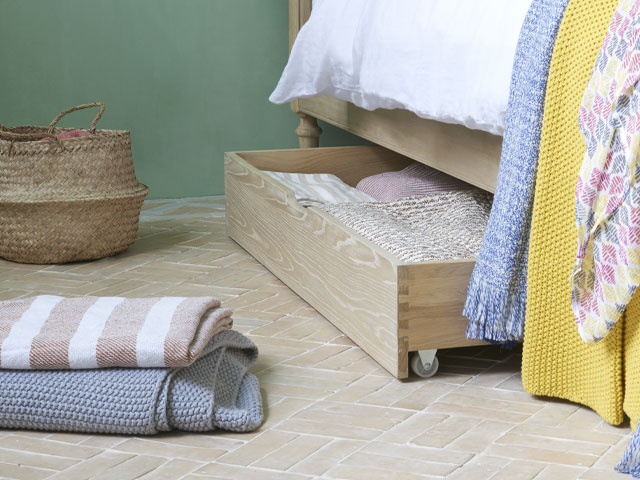
Get the headboard right
As well as having a moment in 2024 decor wise, statement headboards can be conducive to a good night’s sleep. Roynon suggests investing in one that is strong and comfortable.
“This prevents the head knocking against the wall and ensures pillows remain in place,” she says. “In Feng Shui terms, it is regarded as providing protection to the head and neck during sleep.”
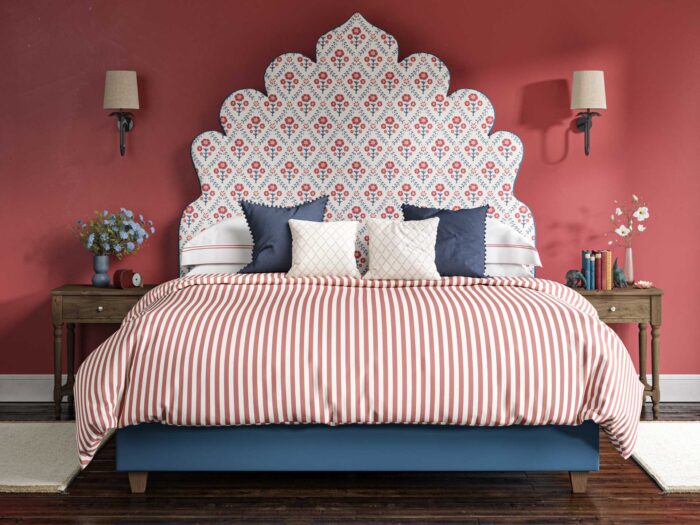
Keep it cool
According to Alison Hughes, interiors director at at Coast Road Furniture, the best bedroom temperature for encouraging sleep is usually 18.3°C, or anywhere between 15.6 to 19.4°C depending on your preference. However, it can be difficult to regulate the temperature of your bedroom, particularly in summer and winter.
“When it’s cold, switch to a duvet with a heavier tog or add extra blankets to your bed to keep warm — turning up the heat will effectively raise the temperature, but it can dry the air out and cause sinus issues,” Hughes explains.
Research suggests that the best relative humidity for sleeping is between 40% and 60%. Similarly, in summer, opening your windows is preferable to using a fan or air conditioning unit for air quality and humidity.
“But if you suffer from hay fever or allergies and find keeping your windows open makes this worse, you might prefer to have them closed,” Hughes adds.
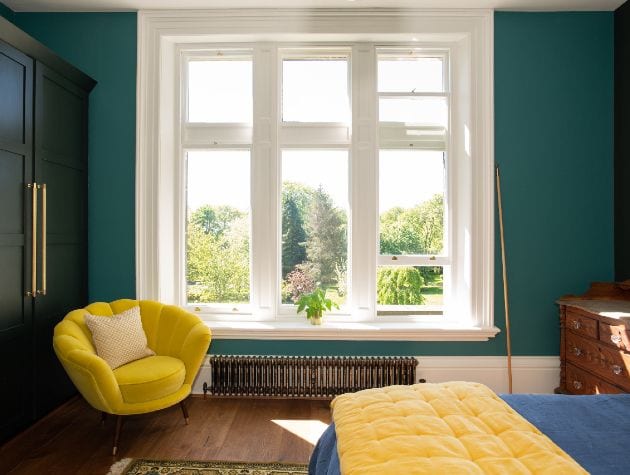
Ditch the tech
Use an alarm clock rather than your phone and if you must have a mobile in the bedroom with you, put it in a drawer or on a shelf below the height of the mattress.
“This is for two reasons. Firstly the blue light emitted by a handset will activate brain function, just at the moment you want to wind down,” Roynon advises.
“Secondly, handsets emit electromagnetic waves and it makes sense to keep these away from the head during sleep.”
Choose calming colours
There has been a lot of research analysing how colours can affect our mood and emotions, with certain bright colours shown to increase anxiety and even blood pressure.
“Therefore, when it comes to creating a restful bedroom environment, it’s best to avoid brights and stick to soft, muted shades that can help create a serene feel,” Melissa Denham, interior design expert at Hammonds Furniture explains.
On its own, white can appear a little cold and stark, so Denham suggests opting for warmer shades, beige, or experimenting with pastels and earthy tones as a baseline for your room.
A recent survey by Travelodge looked at 2,000 British homes and found that purple, brown and grey bedrooms were the least sleep-inducing, while blue came out as a clear winner, followed by yellow and then green.
“In fact, 58% of Britons with a blue wall colour reported waking up feeling happy and refreshed,” explains Hughes. “The colour blue is said to be associated with calming and soothing feelings, which help to prevent nightmares.”
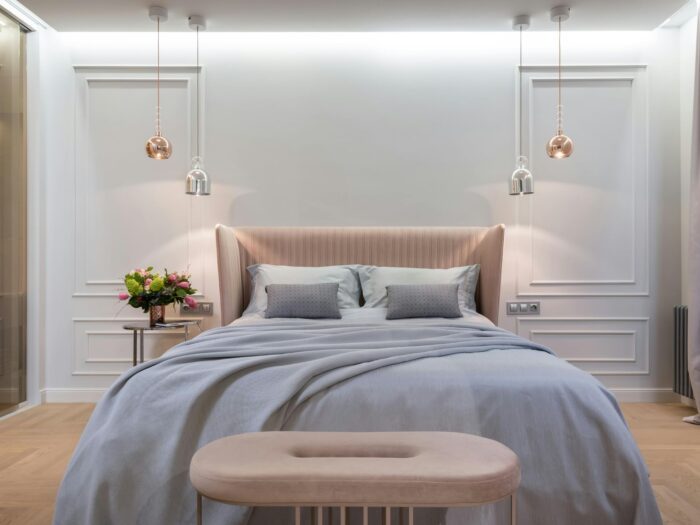
Create an inviting bed
The quality of your bed is likely to affect the quality of your shuteye.
“Choose a mattress that is suited to your body shape, and remember that you should look to replace your mattress approximately every six to eight years to avoid any health implications,” Denham explains.
“A mattress topper can help to make your sleep position even comfier, and super-soft bedding and duvets can all contribute to a restful night’s sleep,” Denham adds.
Thick throws and blankets not only make your bed look inviting and hotel-style standard, but also come in handy on colder nights when your body temperature drops.
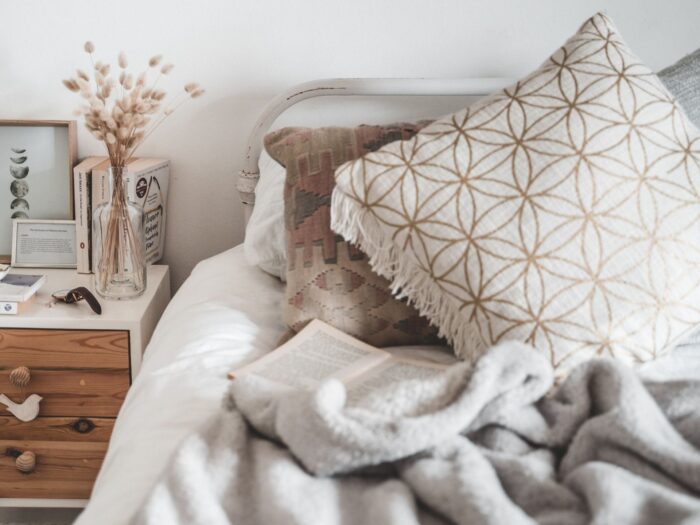
Set the mood with lighting
Natural daylight can help us feel relaxed and calm during the day, but on darker days and evenings, playing around with mood lighting can help create a chilled vibe.
“Bedside lamps give ambient lighting to read a book or magazine, and pendant lights provide a sultry feel when you fancy an evening of pampering and self-care,” Denham explains.
“A dimmer switch will help you wind down before dozing off and will also come in handy when it comes to letting the light in gradually on a morning.”
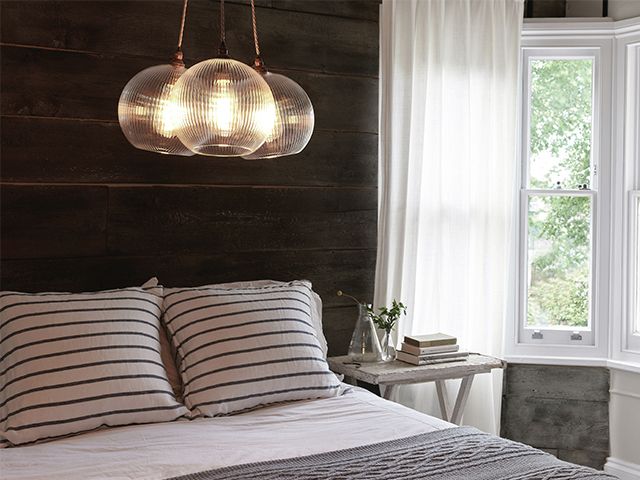
Bring nature in
We know getting out and embracing nature can help us relax and reduce stress, so it makes sense that we also bring the natural world into our homes, particularly in our bedrooms.
“Low-maintenance house plants such as aloe vera, spider plants, cactus and sansevieria are all good options for bedrooms and can boost your oxygen levels at night too,” Denham explains.
Other ways to bring nature into your bedroom include wooden furniture and natural scenes on artwork.
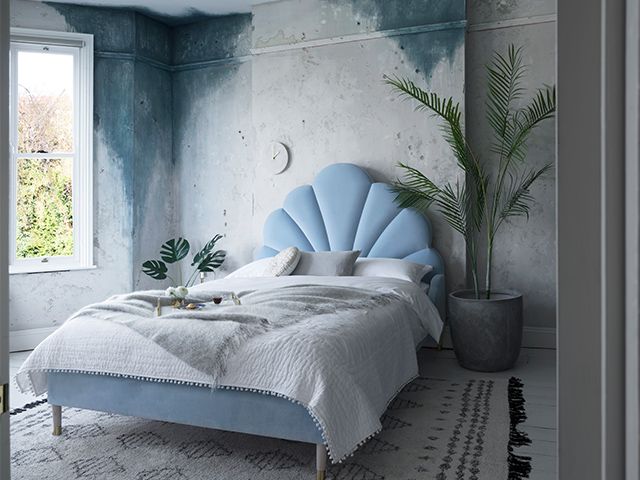
Use scent for a good night’s snooze
You might think of sound and light as being important to a restful night’s snooze, but scent is also important.
“Treat your senses with carefully selected scents to fill your bedroom,” Graham and Green owners Jamie and Lou Graham advise. “When creating a calming atmosphere and to help you feel better rested, opt for scents such as lavender and chamomile through candles and diffusers.”
Go dark
It’s vital to have sufficient darkness when sleeping, as light exposure during sleep can suppress melatonin and impair cardiometabolic function.
“Blackout curtains and blinds can be very helpful, particularly in summer when the mornings and evenings are lighter — just make sure you open them during the day to support your circadian rhythm and melatonin production,” Hughes adds.
“A sleep mask may also be effective, especially if you can’t control the darkness of your room.”
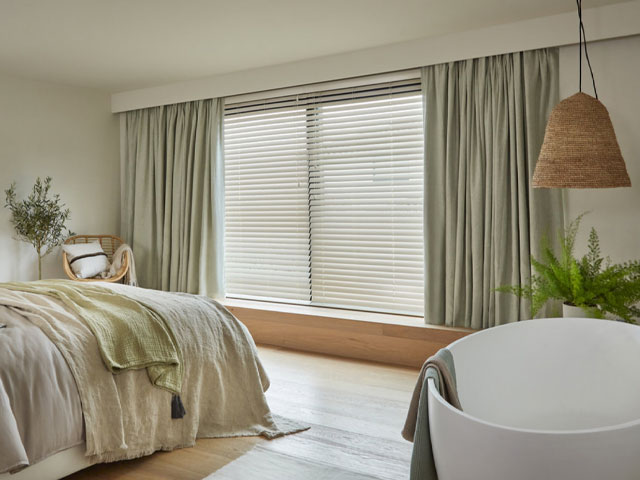
Turn the noise down
Even small sounds and background noise can wake you up and disturb your sleep.
“One way to reduce noise is to include lots of soft surfaces in your bedroom. Soft furnishings like rugs and carpeting can absorb noise, and even houseplants can muffle it to create a quieter environment,” advises Hughes.
“Double glazed windows are capable of reducing sound levels by as much as 31 decibels, so they can prevent disturbances from outside such as busy roads or city centre noise. Earplugs can also be used to block out noise, and many are designed to be comfortable enough to use when lying down.”




